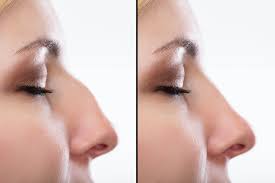The majority of people do not experience any pain after a rhinoplasty. The main symptoms of the procedure include numbness of the upper teeth and nose. The nasal blockage will feel like a bad head cold, but will go away in a day or two. There will be some swelling in the nostrils that will limit breathing for a few days. There will be no sharp pain, but you should be aware of how the swelling affects your breathing after surgery.
Table of Contents
Getting a rhinoplasty
Getting a rhinoplasty can be a traumatic experience for anyone. While the actual surgery is painless, the recovery is a different story. Many patients report feeling discomfort for the first two or three days. These symptoms are normal, but they may make breathing difficult. The surgeon can provide pain management options during your consultation. Here are some tips to help you cope with the pain during recovery. Read on to learn more about Rhinoplasty in Mumbai.
Getting a rhinoplasty is usually performed in an outpatient clinic or a plastic surgeon’s office. You may be given IV sedation or local anesthesia for the surgery. Most patients can return home the same day. More complicated surgeries may require an overnight stay in the hospital. If you’re planning to get a rhinoplasty, be sure to remove any jewelry, glasses, or jewelry that could interfere with your healing.
Recovery time
After undergoing a rhinoplasty surgery, patients will experience swelling and bruising for a few days. After the stitches have been removed, they will be able to move around. After a week, the intranasal swelling will begin to go away and the nasal tip will begin to shrink. The healing time for a rhinoplasty varies depending on the surgical technique used. Generally, patients will be able to return to work or play within a week of their procedure.
Most rhinoplasty procedures require less than 120 minutes. However, there are some rare cases where the patient needs to stay overnight. If the procedure is complicated or if the patient experiences nausea, a brief stay in the hospital may be necessary. Patients should plan to take a week off work to recover. Patients should plan to feel better every day for the first week, and they should be back to normal activities by the end of the second or third day.
Complications
Postoperative complications of rhinoplasty can include collapse of the alar cartilage or a semicircular scar. Although most complications of rhinoplasty are treatable, a few can be severe and necessitate revision surgeries. Complications of rhinoplasty are generally preventable and are often caused by improper techniques or patient healing. Read on to learn more about common rhinoplasty complications.
Bleeding after rhinoplasty is extremely rare. Infections and septicemia are possible, but these are not common. Some patients can develop epistaxis, a condition where the nose bleeds excessively. This can occur at any time after surgery and may last for up to two weeks. Bleeding can lead to infection and requires conservative treatment, but in some cases, surgical correction is necessary. In the most severe cases, the surgeon may perform endoscopic identification and obstruct the territorial artery to prevent further bleeding.
The number of possible rhinoplasty complications is increasing. A skilled rhinoplasty surgeon has undergone extensive training and continues to attend meetings to learn new techniques. Complications of rhinoplasty are preventable, but they must be distinguished from surgical mistakes. Learning the warning signs and avoiding them can help you avoid problems. So, the next time you’re contemplating rhinoplasty, be sure to ask your surgeon about the complications.
Pain tolerance
If you have recently undergone Rhinoplasty cost in Mumbai, you probably have some questions about your postoperative pain. While the surgery is usually a relatively minor procedure, you should still follow the doctor’s instructions closely. To help minimize your discomfort, you can make cold packs with rubbing alcohol and water. Mix a cup of the mixture with three parts water. Place the plastic bag in the freezer and let it harder for several hours. Once cooled, the mixture will mold itself to your face.
Conclusion
During your first visit, your surgeon will assess your pain tolerance. If you are a light sleeper, your doctor may use local anesthesia to numb the area. For more complicated procedures, a general anesthesia is recommended. With this type of anesthesia, you are not awake during the procedure, and your anesthesiologist will administer medications to make you sleepy. A breathing tube is placed into the nose to protect the airway during the operation.

